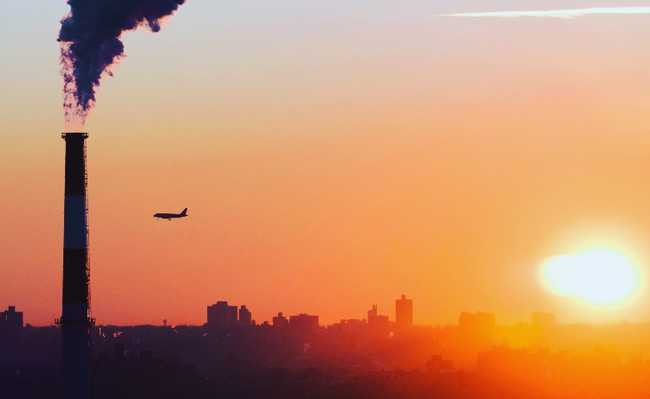Global CO2 concentration breaks record despite the pandemic
Atmospheric CO2 level reached 416.21 parts per million (ppm), the highest since the beginning of measurements, which began in 1958

Image: Thijs Stoop on Unsplash
In recent weeks, as the world stopped to fight the coronavirus pandemic, there have been many reports of improved air quality in some locations. However, one should not think that the climate crisis is resolved. Far from it: the most recent data from the US National Oceanic and Atmospheric Administration (NOAA) shows that global levels of carbon dioxide (CO2) are rising sharply.
In April 2020, the average concentration of CO2 in the atmosphere was 416.21 parts per million (ppm), the highest since the beginning of measurements, which began in 1958 in Hawaii. Furthermore, ice core records indicate that this is the first time we have seen such levels in the last 800,000 years. The United Nations Environment Program (UNEP) World Environmental Situation Room shows a representative increase of more than 100ppm in CO2 concentrations since March 1958.
The curve indicates expected seasonal fluctuations: the northern hemisphere has greater land mass than the southern hemisphere and vegetation absorbs more CO2 during the summer. In this region, the peak of concentration occurs at the end of winter, in May, because with the cold the Earth has less photosynthesis processes and, therefore, CO2 levels rise until the next cycle. When, then, photosynthesis occurs again and new foliage appears, they begin to absorb CO2 again, decreasing concentrations by about 7.5 ppm until October.

Trend in atmospheric CO2 concentration. NOAA data, UNEP World Environmental Situation Room charts. Image: UNEP
However, due to anthropogenic emissions (released by human activities), CO2 concentrations are increasing rapidly. The following graph shows the difference in levels between the same month in different years (there is, for example, an increase of more than 2.88 ppm between April 2019 and April 2020). This shows that, although in the 1960s the increase in one year was about 0.9 ppm, in the period 2010-2019 the average was 2.4 ppm. There is a clearly accelerated upward trend.

Trend in increasing atmospheric CO2 concentration. Comparison between averages for one month and the same month in the previous year. Graph and analysis of UNEP's World Environmental Situation Room. Image: UNEP
the long-term view
Using ice core records, it is possible to measure the CO2 trapped by ice in Antarctica, which dates back to 800,000 years ago. From that period until today, we have never reached 416 ppm. Since the homo sapiens appeared about 300,000 years ago and the first trace of homo sapiens sapiens (also known as a human) dates back to 196,000 years ago, no individual of our species has ever experienced such high levels of CO2.
“This is obviously a big concern for the climate and demonstrates, once again, that urgent action is needed to reduce greenhouse gas emissions. To keep the global warming average at 1.5°C, we need to zero net emissions by 2040 – by 2055 at the latest,” said UNEP's GRID-Geneva director and program manager for the World Situation Room, Pascal Peduzzi.

Atmospheric concentration of CO2 from ice core records for the last 800,000 years. EPA data, UNEP GRID-Geneva graphs (link). Image: UNEP
These results may be surprising to those who optimistically assume that COVID-19 will reduce total global emissions. While it is true that vehicular and air traffic, as well as industrial activity, have been drastically reduced in most parts of the world since January 2020, this is not the case for electricity: according to the World Energy Outlook 2019, 64% of Global sources of electricity come from fossil fuels (coal: 38%, gas: 23%, oil: 3%). Heating systems are functioning as they were before COVID-19 and none of the fundamental issues have changed – such as the search for renewable energy, the use of public transport and an end to deforestation.
In addition, more frequent and more severe forest fires, caused by climate change, continue to affect countries like Brazil, Honduras, Myanmar, Thailand and Venezuela, emitting large amounts of additional CO2. "Without fundamental changes in global energy production, we will have no reason to expect a lasting reduction in these emissions," says UNEP climate change expert Niklas Hagelberg.
“COVID-19 gives us the opportunity to measure the risks we are taking with the unsustainable relationship with the environment and to take the opportunity to rebuild our economies in a greener way. We must take into account global threats such as pandemics and climate disasters in order to create resilient markets, companies, countries and global systems and generate a healthy and sustainable future for all.
“Supporting fiscal stimulus and financial packages to take advantage of decarbonization and the accelerated transition to clean and renewable energy will not only be a short-term economic victory, but also a victory for future resilience,” he added.










